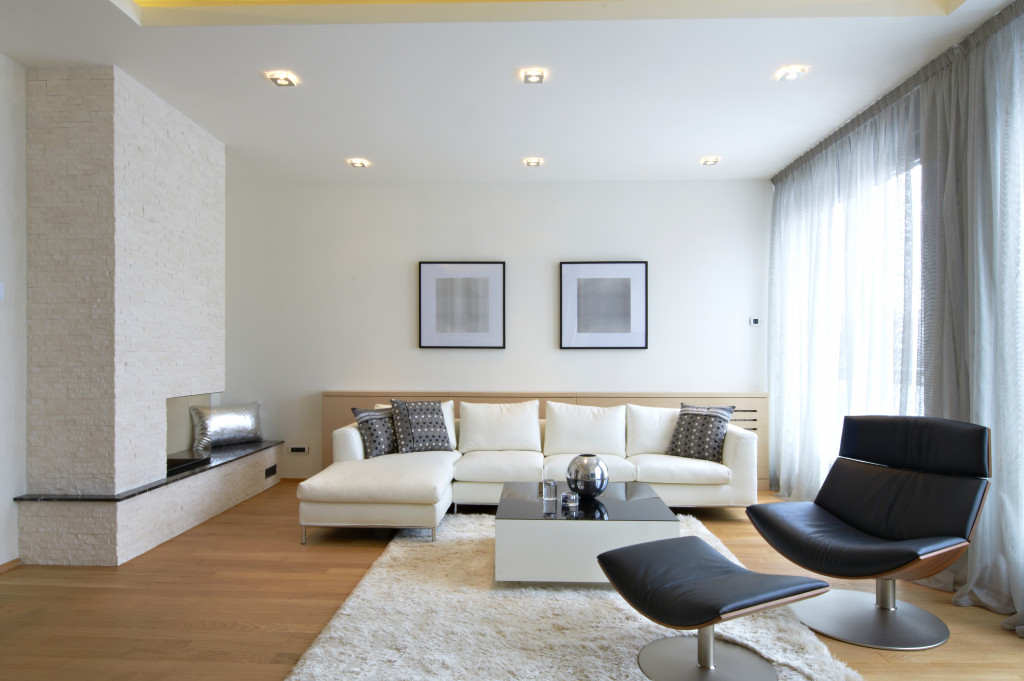It’s true that there are basic interior design rules we need to follow to ensure that our homes are excellent in both form and function. However, some rules can be broken if we want our homes to stand out from every run-of-the-mill house featured on Architectural Digest.
These rules were made to be broken not just to elevate your home’s aesthetic appeal but also as design solutions to specific problems. Here are some non-traditional design tips to help elevate the look and feel of your home.
Place the couch at the center of the room instead of by the wall
One of the biggest interior design rules that people sell as a rule of thumb is to place the couch by the wall. But in many cases, moving your couch or sofa towards the center of the room can actually make the living room look larger and more spacious. But the truth is, placing all your furniture pieces towards the walls might make your space appear cold, uninviting, and less intimate.
Moreover, taking the couch or sofa away from the wall can also provide more opportunities for functional spaces like a desk with drawers and storage or another separate seating area. If your home’s living room is on the larger side, don’t box yourself in the idea that the couch or sofa must be placed firmly by the wall.
Opt for vinyl floors
If you have the budget, most interior designers would tell you that the best type of flooring is hardwood floors and other more expensive materials. But the truth is, you can achieve the same kind of look for a much more affordable price tag while ensuring that your floors will last a long time.
Consider opting for vinyl flooring for your kitchen, bathrooms, mudrooms, and other places in your home that will be exposed to the elements or anything that can cause wear and tear. This type of flooring is easier to clean and maintain, and they are “resilient” for a reason.

Asymmetry can still look good
Another general rule that people like to bring up when it comes to interior design is the concept of symmetry. While symmetrical design would look good in a space that’s evenly split between two sides mirroring one another, this is not always the case for all rooms. It’s still a case-to-case basis.
Symmetrical design is reminiscent of more formal rooms and traditional spaces. It is easier to style and design since we’re repeating the design elements on both sides. But this is not the style required for all types of living rooms; it’s not a one-size-fits-all.
If the room you’re designing is asymmetrical, don’t be afraid to embrace it. Embrace the imbalance if the room’s natural design does not allow a specific focal point at the center. You can bring balance to an asymmetrical space by adding built-ins like shelves or a window seat. You can trust and believe that these additions will add more color and character to the space.
Think of problems as opportunities
When we find residential properties with a lot of problematic designs like asymmetry, the tendency is to throw in the towel by looking for other properties that are more polished and perfect, so to say. But in interior design, it’s the pivot and the creative solutions we come up with that can unexpectedly provide the best results.
One of the most important things we can do for our homes when doing a new project is seeing the potential beyond what we see. Although making some big changes and doing some major restructuring can be a daunting task, a few changes can elevate and transform how your home looks and how you live in it.
One example is adding dimension to your space by incorporating new details into the ceiling. You’d be surprised by how beams, wallpaper, treatments, and paint color can transform a space, especially a ceiling that’s higher than normal. Even adding more tone and texture can add interest to the design. Don’t be too quick to give up on a “problematic” space. Instead, think of creative ways to solve the problem while adding depth and character to it.
When designing your home, you don’t need to follow every rule on the Internet. Be inspired by trends, but don’t let yourself be boxed by their ideas. Explore, trust your gut, and consult with professionals to come up with a design that’s truly your own. This way, you can say that you live in a home that you designed and brings comfort.

